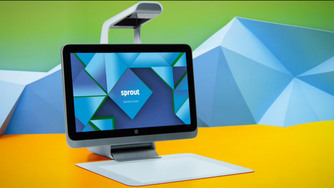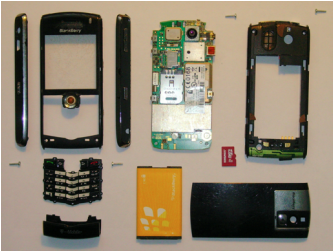|
12/8/2014 0 Comments No More Poking AroundBy Trishanya Raju Every few weeks we hear the familiar call to donate blood, and save lives. What makes us go back to these blood-drives over and over again? It’s likely the prospect of saving lives, the idea that there’s something that we can do to help people. What makes us apprehensive? I’d say it’s probably the prospect of the nurse pricking us all over to find a vein. It’s not the best feeling, and it sort of throws a wet towel over the whole saving lives thing. So what do the scientists do? They invent a device that presents a glowing map of your veins right onto your arm. Device is still in it’s trial phases in Australia, and looks a little like something out of a superhero movie (radioactive-y), but it’s supposed to be very safe. The way it works is that it shines an (almost) infrared light onto your arm. The deoxygenated hemoglobin that flows in your blood absorbs this light. This creates an eerie map of your veins, on your arm, so that nurses can see exactly where the needle should go in. So there you have it, no more unnecessary pricking. Now what’s stopping you? To donate blood: http://www.redcrossblood.org/donating-blood
0 Comments
 By Kaitlynn Bayne HP has had a rough time recently. If you think about it, HP hasn’t been in the spotlight for much other than their recent split into two companies. But, after years of work, they are now coming out with what might be their comeback product. They don’t even refer to their newest computer as a PC. It is under a completely new category called Sprout. It consists of a computer screen- like a PC monitor, and a touch screen mat. You can put a physical object (for example, a block) and Sprout can take a picture of it and convert it into a 3D image on the computer screen. Similarly, if you find a picture you like on the computer, you can “flick” the picture, and it will appear on the mat screen. Of course this doesn’t produce a physical object, but it appears on the mat, which allows you to rotate the object and make changes to it. Sprout is part of HP’s new initiative called HP Blended Reality ecosystem. HP is also introducing a new 3D printer that can be paired with Sprout. This pair seems really cool for people interested in 3D and graphic design. It’s a bit pricy- nearly $2000 for Sprout itself. Because it is very focused on 3D design, I don’t see it becoming the newest staple in everyone’s household. However, I think it will be a very useful new tool in Design schools and workplaces that deal with graphic design. Source: http://www.usatoday.com/story/tech/columnist/baig/2014/10/29/hp-sprout-3d-printing-first-look/18105925/ 12/8/2014 0 Comments Is Being Too Clean Bad? By Chetali Jain Never in history have allergy labeling and warnings been such a concern as they have become in recent decades. The increasingly sterilized world, while protecting against communicable diseases, is causing our immune system (in grossly simplified terms) to become bored and begin attacking non-threatening substances. Thus, autoimmune disorders are born. Autoimmune disorders occur when the body’s immune system begins attacking things that are normally non-antigenic. Allergies are one such example of this where a substance is considered a threat and the body’s immune system becomes activated in response. The rising number of peanut allergies, for instance, in America is indicative of increased sterilization and usage of chemical pesticides in all our foods. The body no longer differentiates between enemy and friend and therefore begins to attack whatever foreign invader it comes across. So is the solution for everybody to stop washing their hands and eating food off the ground? No, but we should be mindful of our everyday habits. Instead of staying cooped up inside with our vast array of technological devices, we should spend an hour or two in the sun, biking through the woods, etc. These activities build our immunity to actual dangers. Additionally, we should be aware of where our food comes from. Foods treated with pesticides are especially harmful because of the chemical residue they leave behind in our body. According to PAN North America, 93% of Americans tested by the CDC had metabolites of chlorpyrifos — a nuerotoxic insectide — in their urine. Banned from home use because of its risks to children, chlorpyrifos is part of a family of pesticides (organophosphates) linked to ADHD. This shocking fact indicates that chemical pesticides are associated with detrimental effects on the human body. It is important to be mindful of how our bodies respond to our environment and act accordingly. By boosting your immune system you are eliminating a host of possible health issues that arise because of it. Source: http://www.drweil.com/drw/u/QAA401228/Why-Do-Rich-Kids-Have-More-Peanut-Allergies.html www.panna.org/issues/food-agriculture/pesticides-on-food 12/7/2014 1 Comment Does Stress Cause Ulcer Formation?By Alyson Rich No. Even though that grouchy neighbor of yours believes that the stress of shooing you off his lawn will give him an ulcer, rest assured that stress does not cause the formation of an open sore. Ingesting spicy food and coffee will not cause ulcers, either. Ulcers are most commonly found in the stomach or duodenum (the upper part of the small intestine), and are known as peptic ulcers. Although approximately one out of every ten Americans will suffer from a peptic ulcer at some point in their lives, most people remain unaware of what really causes them (1). Since the 1980s, studies have consistently shown that there are two main causes of peptic ulcers: bacterial infection and overuse of non-steroidal anti-inflammatory drugs (NSAIDs) (2). NSAIDs such as asprin or ibuprofen only cause approximately 20% of peptic ulcers and really only become a problem when not taken as directed. This is why the warning sections on NSAID labels always have a special note about stomach bleeding. The majority of peptic ulcers form as a result of bacterial infection. This bacterium culprit is Helicobacter pylori (H. pylori), which burrows under the mucus coating protecting the digestive tract from stomach acid. Without this protective layer, the stomach acid burns through the small intestine or stomach and creates an open sore (ulcer) that may bleed (3). Although many people have a H. pylori infection and never develop an ulcer, 90% of all people with ulcers are infected with the bacterium (4). Even though stress can certainly make matters worse it will not cause ulcers to form, so try to be kind to that annoying neighbor while politely informing him about the real cause of ulcers. For more information, watch: Sources:
1. http://www.webmd.com/digestive-disorders/understanding-ulcers-basic-information 2. http://www.medicinenet.com/script/main/art.asp?articlekey=43451 3. http://www.mayoclinic.org/diseases-conditions/peptic-ulcer/basics/causes/con-20028643 4. http://kidshealth.org/teen/diseases_conditions/digestive/ulcers.html# 12/7/2014 0 Comments Choking Under Pressure By Jenny Gong In sports, when it gets down to those few crucial final seconds in a game, even the most experienced football player could miss an easy pass that could have scored the winning touchdown. Professional basketball players with years of training can miss easy free throws that could have led to a win. When that much pressure is placed on one person, it’s easy for them to “choke”. Recently, researchers at Johns Hopkins University have found that performance depends on two factors: the incentive of winning and a person’s aversion to loss. In their study, the participants were given $100 to play a game inside in MRI machine. At the end of 300 rounds, one random round was chosen to determine what reward the participant would receive. In a separate test, each participant was asked if they would take 140 coin toss gambles for to win money. Researchers performed this test to determine each participant’s aversion to loss. By using the MRI, researchers were able to determine that the ventral striatum was triggered during the experiment. Those with high loss aversion had lower striatal activity and performed worse when faced with high potential gains. On the other hand, those with lower loss aversion had lower striatal activity when faced with large potential losses. Through this experiment, the researchers were able to conclude that the ventral striatum plays a pivotal role in motivation and performance. Hopefully, by doing further research into the ventral striatum we will one day be able to overcome our loss aversion and the term “choking under pressure” will become obsolete. Source: http://www.sciencedaily.com/releases/2014/11/141104183606.htm 12/7/2014 0 Comments Paternity LeaveBy Boseong Yun
The New York Times reports on the infeasibility of paternity leave as an institution. In “Paternity Leave: The Rewards and The Remaining Stigma,” Clair Cain Miller shows that the paternity leave, despite its benefits to the families, is simply not practical. Miller explains the positive impacts of taking paternity leave in her article, “men…are likely to be more involved for years to come and that their children will be healthier. Even their wives could benefit…women whose husbands take paternity leave have increased career earnings and have a decreased chance of depression in the nine months after month.” This reveals that the paternity leave does have positive impacts on the health of wives and children with more husband participation in the family. Despite these benefits, however, Miller further shows that taking paternity leave is not an option that many can afford. More specifically, men are discouraged from taking paternity leave due to potential negative effects on their career. For instance, Miller asked for opinions from a lawyer working at a large corporate law firm, and he replied, “How are you going to service your clients? What’s your level of commitment to the firm?” This shows the cultural perception that men who take paternity leave are not dedicated to the company, and this inhibits men from taking paternity leave. Choosing to take paternity leave for the family accompany costs that harm their career. In fact, the White House Council of Economic Advisers mention that the third of male workers say that they have no option to take leave, and that the percentage of paternity leave has dropped by five-percentage point from 2010 to 2014. While Miller shows that there have been various programs and initiatives undertaken to encourage taking paternity leave, the number shows that the impact has been minute. While there may be various reasons behind this pattern, it is important to notice that taking paternity leave seems to accompany economic costs for men in the end, and also how economic costs are also intricately tied to caring for the family. For some men, bringing in more money for the family may be a priority, while some men may think taking paternity leave may be more important for the family. In order to resolve this issue, there should be more research on the impacts of taking paternity leave on the long-term with empirical evidence, also how this directly affects gender inequality issues. Source: http://www.nytimes.com/2014/11/09/upshot/paternity-leave-the-rewards-and-the-remaining-stigma.html?_r=0 12/7/2014 1 Comment Do We Need Milk? By Bridget Hennessy Studies are starting to show that the recommended three cups of milk a day is actually too high and is a risk to women’s health. In a Swedish study, women who drank at least three glasses of milk daily were twice as likely to die in twenty years than others who drank less milk daily. It was also found that there is a direct relationship between milk intake and women’s risk of bone fracture as intake increases. There’s more evidence that galactose, a sugar found in milk, might induce oxidative stress and inflammation in women, which affects mortality and fractures. This low-grade inflammation is persistent and is characterized by dilated blood vessels and overly active immune system, which, when tested on by giving animals galactose, caused them to die much faster. From this evidence in the health of animals, scientists watched 61,433 women for twenty years. During this time, almost a quarter of the women died and more than a quarter had fractures. After looking at age, body mass index, and alcohol consumption, the researchers found that women who drank the recommended amount of milk everyday were 1.93 times more likely to die than were women who drank less than a glass of milk per day. For males, though, there is no connection between milk consumption and mortality or fractures. Source: http://www.livescience.com/48503-3-servings-milk-linked-higher-mortality.html 12/5/2014 0 Comments What’s in my smartphone? By Mary Gallagher If you’re anything like me, you spend a lot of time standing in front of vending machines, counting out pennies in your palm trying to get a bag of Cheez-Its (do I know you or do I know you?). If you’re anything like me, most of the time you probably don’t have quite enough coins to cut it. But never fear! Grab the handy precision screwdriver from your purse and pry open that smartphone. Congratulations – you’ve got $1.58 worth of gold! Enjoy those 90-cent Cheez-Its and get a flip-phone with the money left over. We use gold in smartphones and laptops for its conducting powers. When most people think “conductor” they think copper, but copper, while cheap, is actually way slower at transporting electrons than gold is. Silver is even faster than gold, but it also corrodes much faster, which is no good if you want your phone to last more than a year or so. While insignificant on the level of each individual phone (unless you’re really desperate at that vending machine), extracting precious metals like gold from electronic waste can be both highly profitable and far more environmentally sustainable than traditional gold mining. This has been shown to be successful in small experiments – for instance, over the span of four months in 2010, the Japanese government collected 567,000 used cell phones, which yielded around $784,313.00 in gold, as well as a good amount of silver, copper, and palladium.[1] But much of our e-waste is currently exported to poorer nations in exchange for cash, where cottage economies have sprung up around extracting gold from smartphones and laptops. The incomes earned from inefficient backyard extraction might be too small, however, to balance out the health impacts of the toxic pollution that comes from the e-waste.[2] If countries like the United States follow Japan’s example and recognize the profit in recycling their e-waste, hopefully they will create more sophisticated recycling programs that will both provide jobs and protect the environment and public health from e-waste pollutants. [1]http://books.google.com/books?id=kBDo5ClEaxAC&pg=PA38&lpg=PA38&dq=50+cents+of+gold+in+cell+phones& source=bl&ots=v9zUfaTuU-&sig=xMVj-_8_erVKBuSOqMr1PMQcMws&hl=en&sa=X&ei=- 4lWVKXYOtD4yQTRpYKQBQ&ved=0CDIQ6AEwAg#v=onepage&q= Japanese%20government&f=false [2] http://www.iop.org/news/11/may/page_51103.html 12/5/2014 0 Comments Anxiety ManagementBy Ammara Virk
The most common type of research done on anxiety seems to focus on what causes anxiety. For example, they may focus on environmental factors such as work-related stressors as a cause for anxiety. In such cases, they are focusing on processes that “turn on” anxiety. However, as is pointed out by the article “The biology of Anxious Temperament May Lie With a Problem in an Anxiety ‘Off Switch’”, an important aspect of anxiety to consider is that dysfunction could exist in an individual’s ability to deal effectively with and diminish anxiety after its onset. Researchers at the University of Madison suggest that a specific neuropeptide, neuropeptide Y, is the ‘off-switch’ and deficiency in this neuropeptide can lead to anxiety. Also note that these deficiencies were found in the central nucleus of the amygdala, a region of the brain that plays a very important role in fear, anxiety, and their regulation. These findings have important implications for treatment: for example, in instances where preventative therapy is not possible, this will allow researchers to focus on treatments “promoting recovery after stress.” This is very helpful as early onset of extreme anxiety (that is, during childhood) can lead to problems like depression and substance abuse later on in life. Source: http://www.sciencedaily.com/releases/2014/12/141202082133.htm 12/5/2014 0 Comments Bio-PrintingBy Kaitlynn Bayne Remember when 3-D printing just seemed like something out of a sci-fi movie? Well as we all know, this “fantasy” has become a reality. You can buy a 3-D printer and print many things you need, even shoes! But here’s something you probably never thought of: how about a 3-D printer that prints functioning organs? Those might be a little more useful than shoes, right? Although it sounds extremely unrealistic, it is a lot closer to becoming a reality than you might think. Okay, so there won’t be a new template online that will have your printer magically make working organs. However, scientists from the Universities of Sydney, Harvard, Stanford and MIT have been working on a type of technology called “bio-printing.” The idea is similar to a 3-D printer, using interconnected tiny fibers and cell-rich protein-based material to make up the tissues (which would be the material used to make the organs). Although the technology is not at a point where it can start being used in hospitals, it is well on its way. They have successfully bio-printed small parts of tissues in the lab. This means that there is definitely a possibility that in the future, whole organs could be made with this technology. Right now, there is a much higher demand for organs than there are organ donors. Just imagine being able to print out a full organ at a hospital and it saving somebody’s life. That would be incredible. Source: http://www.sciencedaily.com/releases/2014/06/140630103136.htm |
WELCOME, UMICH SCIENTISTAS!
CAMPUS PICS
WHAT'S NEWUPCOMING EVENTSPAST POSTS
October 2022
SORT BY TAG |
The Network for Pre-Professional Women in Science and Engineering
The Scientista Foundation is a registered 501(c)(3) -- Donate!


 RSS Feed
RSS Feed